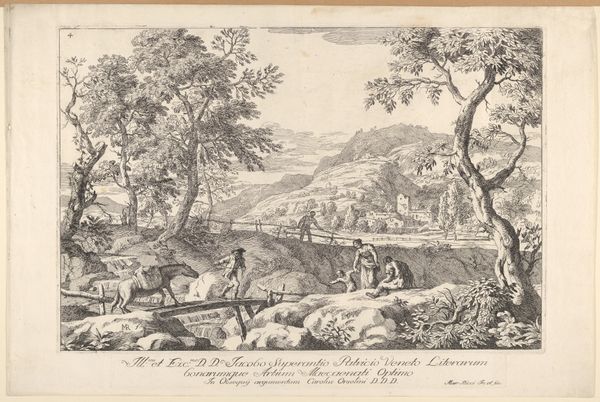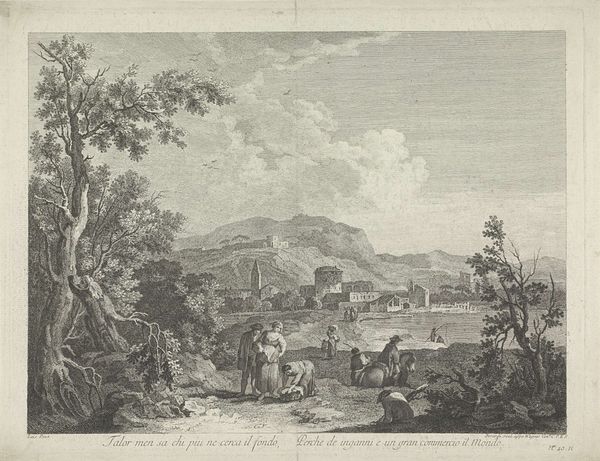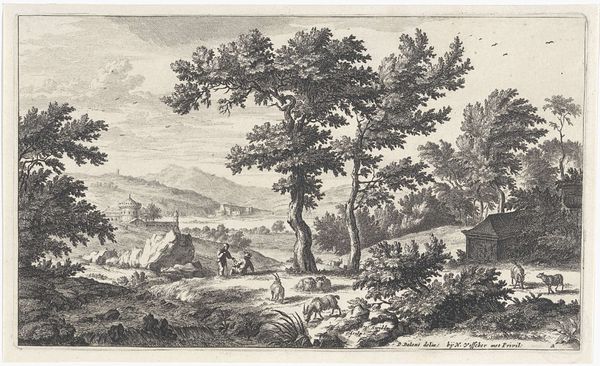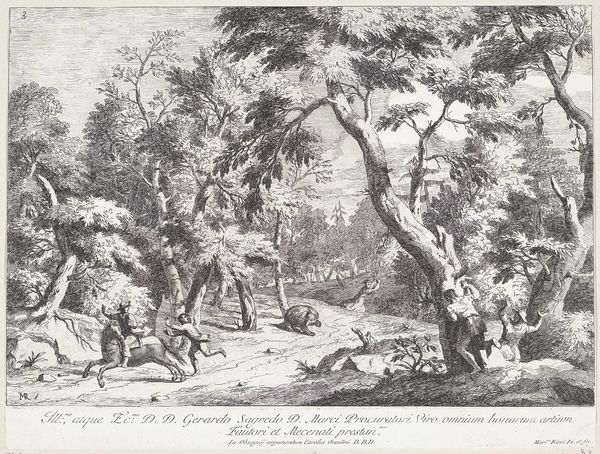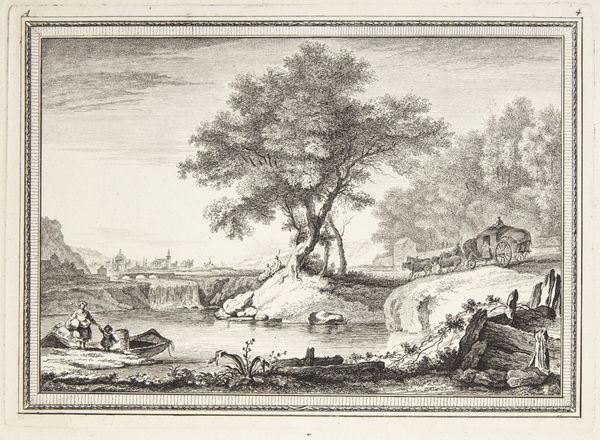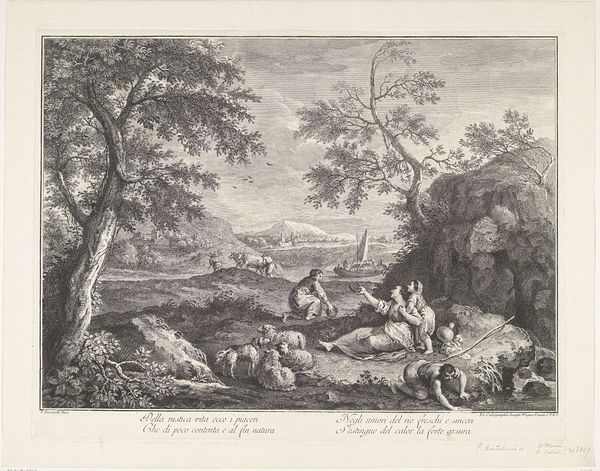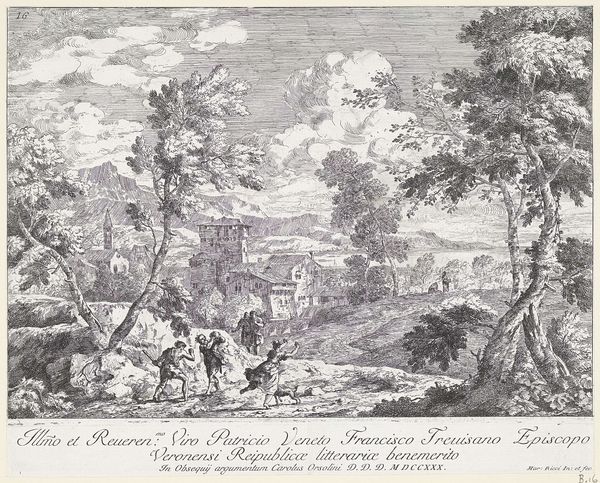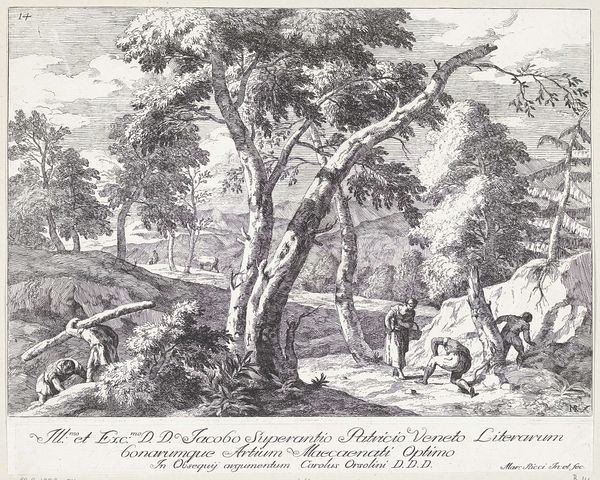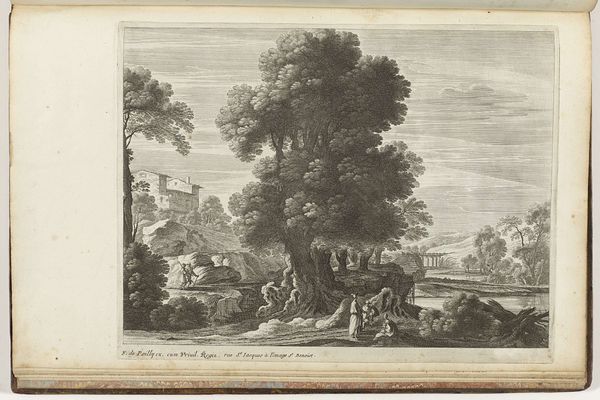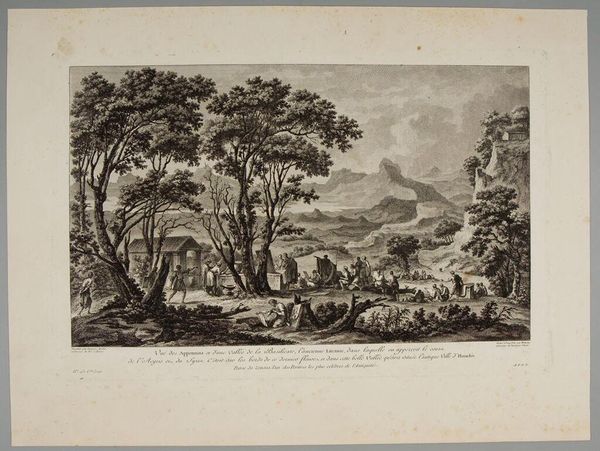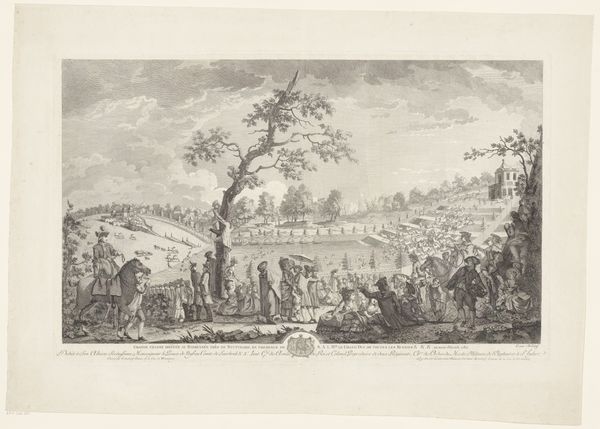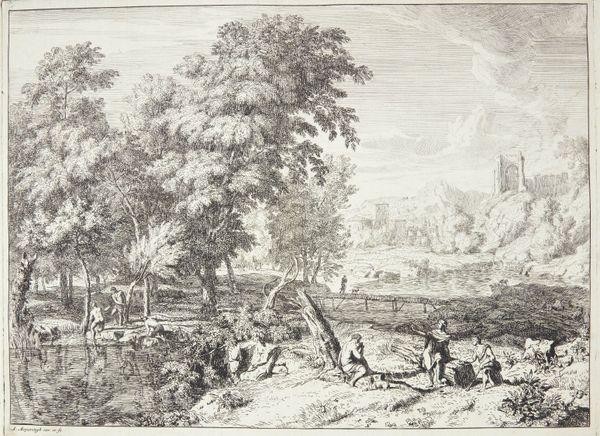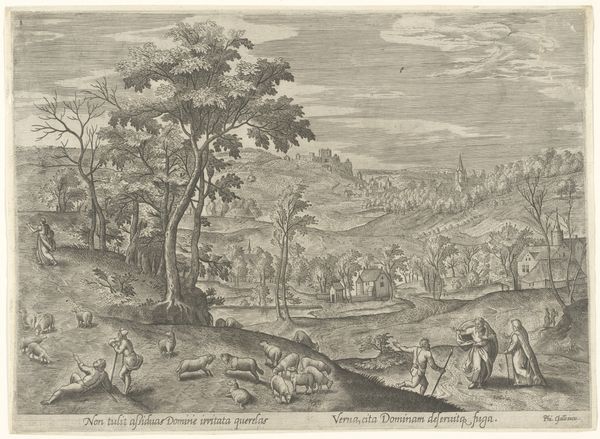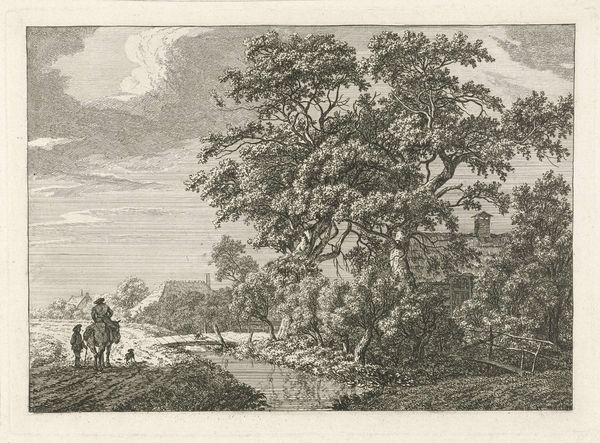
print, engraving
#
baroque
# print
#
landscape
#
genre-painting
#
engraving
Dimensions: height 320 mm, width 425 mm
Copyright: Rijks Museum: Open Domain
Curator: Take a moment to gaze at "Heuvellandschap met huizen," a stunning 1730 engraving by Marco Ricci, currently housed in the Rijksmuseum. I always find my eye pulled into the intimate world that is framed here. Editor: Immediately, I'm struck by the peacefulness. It’s monochrome, sure, but the meticulous details and interplay of light create this delicate serenity. It feels like an observation, less a celebration of land ownership and more an engagement with quotidian, rural life. Curator: Precisely! There's something both grandiose and familiar, you know? Ricci beautifully marries the sweeping landscape views characteristic of the Baroque period with vignettes of everyday life. Look at the figures near the trees! There's a whole drama unfolding with almost comedic flare. Editor: Those foreground figures certainly command our attention, don't they? They become part of a narrative about resource conflicts—who is allowed to cut trees or lay claim to this shared land, particularly considering what these resources meant to marginalized communities at that time. It raises questions of access, ownership, and environmental stewardship that continue to resonate with us. Curator: A very astute point! And look at the composition itself! He uses these strong diagonals— the sloping landscape, the leaning trees—to lead the eye into the depths of the scene. And the way the trees frame the composition creates such a marvelous theatrical effect! I feel like the artist's ego recedes, allowing these landscapes to truly breathe and tell their own story. Editor: And I wonder, in this seemingly innocent pastoral scene, if the placement of that hilltop city isn't suggesting a simmering power dynamic? Consider who benefits from these resources. Who is watching, from above? In this, I feel like Ricci invites us to ask important questions about these seemingly untouched and neutral landscapes, implicating us, as viewers, in those historical imbalances. Curator: Hmm, I see it more as an open invitation—a space for pondering our connection with the earth. Perhaps it reflects the way landscape shapes and is shaped by humanity. In this sense, it speaks to a larger timeless interplay between nature and humanity. Editor: Perhaps, perhaps... In the end, for me, the conversation this work stimulates, especially in this era, is its lasting power. Curator: It's funny, isn't it? An 18th-century landscape reminding us to not simply gaze upon a picturesque image, but truly see the layers beneath the surface.
Comments
No comments
Be the first to comment and join the conversation on the ultimate creative platform.
